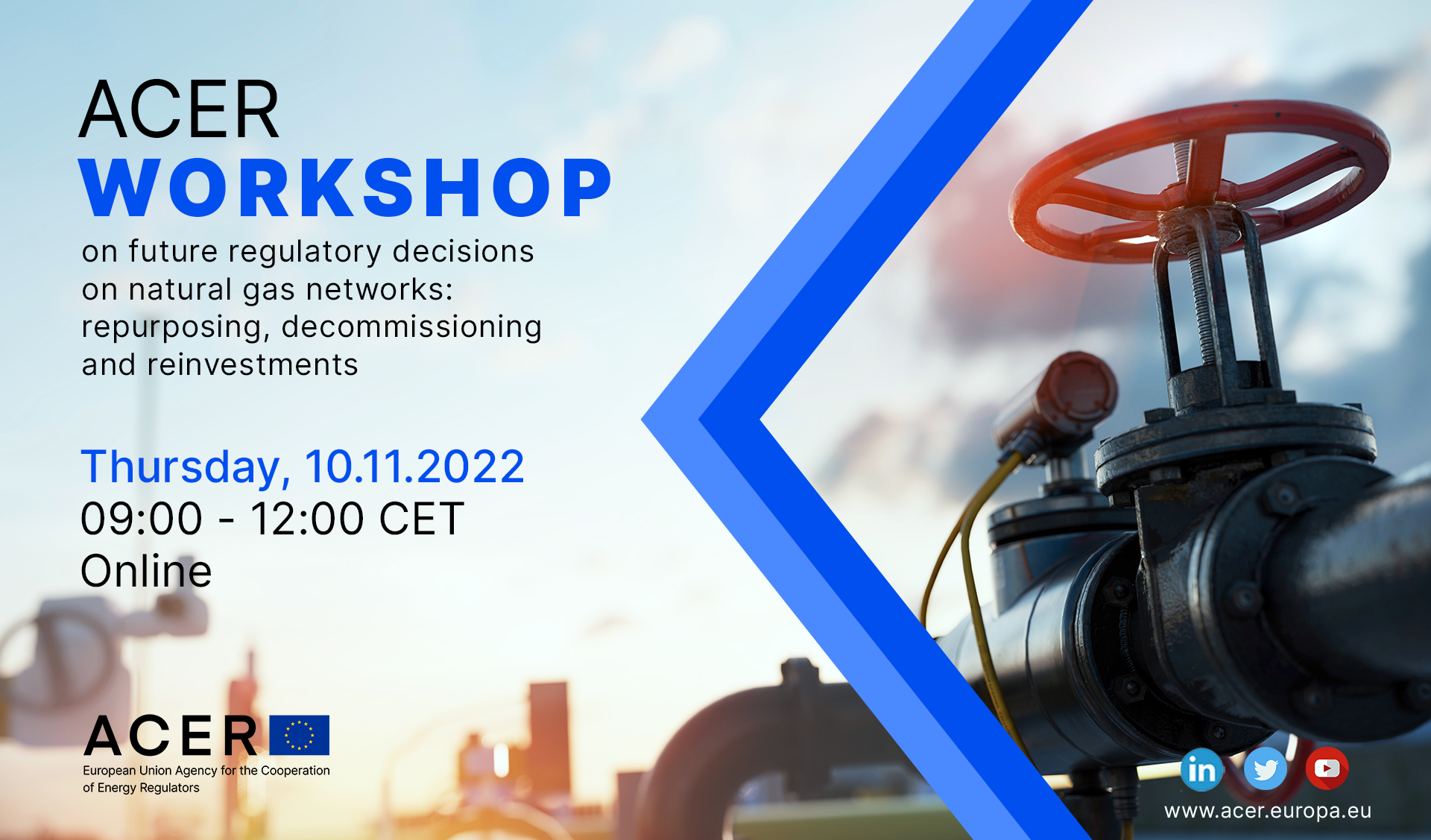ACER Workshop on future regulatory decisions on natural gas networks: repurposing, decommissioning and reinvestments

What is it about?
The energy transition and the European decarbonisation policies, as defined in the European Green Deal and the National Energy and Climate Plans, point to a changing role of natural gas transmission networks up to 2030, 2050 and beyond. It is expected that the demand for natural gas will permanently decline. As a result, the competent authorities (e.g. national regulatory authorities – NRAs) will need to take regulatory decisions on the repurposing of natural gas assets for their use as part of hydrogen networks, the potential decommissioning of assets that become stranded and the reinvestment of assets that reach the end of their regulatory or technical lives. These are the three key options that NRAs and transmission system operators (TSOs) are already facing and will continue to face in the future when managing the assets that are part of today’s natural gas networks.
ACER has commissioned DNV to conduct a report to identify and analyse the key regulatory challenges that NRAs and the natural gas TSOs are facing due to the expected decline of natural gas demand. The report also analyses possible regulatory measures to address these challenges.
Repurposing
The repurposing of natural gas pipelines for the use of hydrogen transportation will likely have implications on natural gas network, by using part of natural gas assets for dedicated hydrogen networks. These decisions will require clarity on the principles used to set the asset transfer value and to allocate the revenue between the natural gas TSOs and users of the natural gas networks.
Decommissioning
The decline of natural gas will open the possibility of some natural gas assets becoming stranded. For this purpose, the report explores the regulatory tools currently used for the decommissioning of natural gas assets, including the types of costs involved (e.g. removing assets from the ground, returning land to its original state, etc). Additionally, the report investigates different options to allocate the costs of assets that could potentially become stranded. These include the allocation of stranded costs to users of natural gas networks or to TSOs and the use of government budgets.
Reinvestments
The report looks into the current practice applied by NRAs for assessing the choice of extending the lives of assets that have reached the end of their regulatory use (i.e. fully depreciated assets) or of replacing these assets with new ones. Assets that have reached the end of their regulatory lives (e.g. 40-50 years), can still be used as their technical lives sometimes extend for longer periods of time (e.g. 60-70 years). The report assesses the different regulatory tools for NRAs to incentivise TSOs taking advantage of this longer technical asset lives limiting the additional costs that are added to natural gas networks at a time when natural gas demand is expected to decrease. The report assesses the current NRA practice and proposes a number of regulatory instruments for this purpose.
